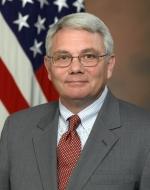Complementary Fit Between Lean Six Sigma and Requisite Organization Theory
Speaker A The interrelationship between these four areas that I talked about the organization continuous process Improvement, situational awareness, and professional development. If I can just relate ...
Transcript of the presentation video
NOTE: This transcript of the video was created by AI to enable Google's crawlers to search the video content. It may be expected to be only 96% accurate.
Speaker A The interrelationship between these four areas that I talked about the organization continuous process Improvement, situational awareness, and professional development. If I can just relate the first three because I do think professional development is the soup that everything accelerates. If you have better trained, better qualified people, it makes it easier to stomach the change. If I could stop everything and start right from a clean slate, I would get the organization right. And then I'd look at the processes by which the organization accomplishes work. I'd take out unnecessary steps in the processes and then in those processes that remained, the steps that remained, I'd reduce the variability in those steps and then I would lace the whole thing with situational awareness so I knew whether I was achieving the results that I wanted. Now we can't stop the war, stop the future in the United States Army. We have to continue changing a moving train that's actually moving very fast and carrying a lot of freight. So what I see is the relationship between these issues right now. It really is complementary. And I think where we have Lean Six Sigma moving out, looking at steps and processes, it will inform us about the organizations and make the organizational design work we do more palatable, less challenging to those organizations. I'm already seeing some results. We went into another sort of ancillary organization to the first assessment that we did. The office of the administrative assistant and the leadership of that organization offered us 20% in terms of reductions as we walked in the door. So I think that's a realization of the power of looking at doing a real principled look at the way you do business. Lean Six Sigma is also a forcing function for the army. And what I like to say is it's a way to convince the army to apply proven business principles in areas that they can be useful. It's a way to increase the business acumen of the army. And so I think in that sense also, if you're used to looking outside your organization and you're used to taking lessons learned from other people, they're doing exactly what you're doing. They might not be wearing a uniform, they might not be in this country, but what they're doing has applicability because their process is just like your process in terms of output. Whether you're fixing a truck, running a hospital, writing educational materials. I mean, all those things happen in the army and myriad more, but they're happening out in the world there and people are learning how to do them more efficiently, more productively, and we can do that. I think if you get that mindset and you overcome those hurdles, you can take a theory like organizational design, levels of work, levels of human capability and make it more palatable. You can sort of increase your tolerance to outside thought and your embracing of change that much more easy. So I think they are going on simultaneously I think that's the right way to do it in the army. Lean Six Sigma is an army wide deployment. Everybody all at once, 20 different subordinate organizations that will touch every soldier, civilian, contract, service worker in the army. The organizational design we're not doing as ubiquitously, we're doing it in. I think the model that I sort of learned from Sir Roderick to go out in a set piece way, deliberate, but a reasonable pace so as not to upset the organization and to really prove the validity of the organization to itself. So that's how those two things are sort of reinforcing each other right now. I do think that the requisite principles and Lean Six Sigma are very complementary. If I could, I would get the organization right because I think one of the dangers with Six Sigma, if you go into an organization that's not lean, it's not focused, it's not requisite, if you will, that you run the risk of improving processes that are not productive. You're making the wrong process more efficient. Now, it is a bottom up, top down approach. And we're looking at the enterprise processes from the headquarters level and we'll put the resources to those processes. Those will be the real high return things. We're not going to do any wrong processes there. We're going to change the processes through the adoption of Lean Six Sigma. At the lower levels, though, you do run the risk of having some unproductive activity. But on the other hand, you have to do projects in order to train the workforce. That is one of the compelling features of Lean Six Sigma. It's very low in terms of academic content and very high in terms of practical application. And the way you learn to do it, the way you get your belts and those sort of accoutrements is through actually working on real projects, which are real work sanctioned by the leadership and done by the people who own and understand the processes. So I think if you could get the organization right, if you could stop the train and then apply Lean Six Sigma approach to a right looking organization, that would be the most effective way to do it. But we have to do it simultaneously. I think to make the headway, we need to make.
Major organizations and consulting firms that provide Requisite Organization-based services





